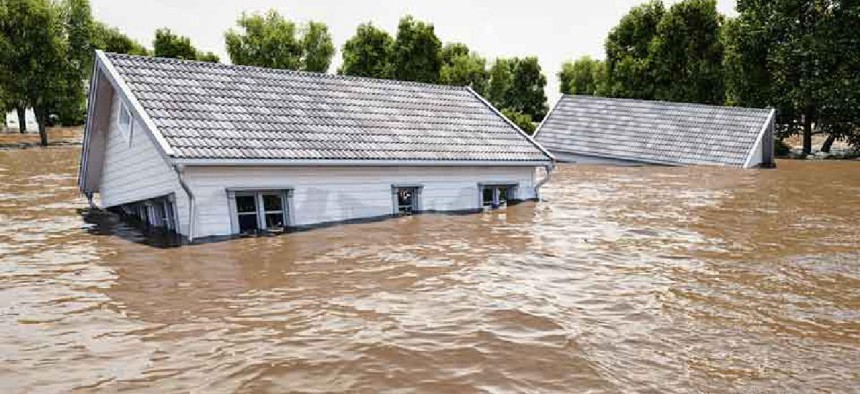Responders get hands-on look at latest tech


Connecting state and local government leaders
Operation Convergent Response was designed to allow participants to sample technologies in real-world environments, as opposed to during a presentation or in a classroom.
It's a sobering scenario: When cyberterrorists’ ransomware demands go unmet, they block power to a dam, release the water and flood a town to its rooftops. First responders quickly work together using the latest interoperable technology to pinpoint stranded residents, while cyber experts regain control of the dam system and stop the flow of water.
This scenario was one of six that Operation Convergent Response (OCR) ran during an exercise designed to train and prepare first responders for major disasters. Held Nov. 19-21 in Perry, Ga., and hosted by Verizon and Nokia, the event drew more than 400 responders and about 150 vendors. The OCR exercise was designed to allow participants to sample technologies in real-world environments, as opposed to during a presentation or in a classroom.
“For first responders, you really like to get your hands on things,” said Jerry Hauer, the former New York state commissioner of homeland security and emergency services who helped set up OCR. “Because seconds count, because of the nature of the environment, whether it’s police, fire or EMS, you really need to have a good sense of the technology that you are going to work with, and you don’t get that in a classroom.”
All OCR scenarios covered the four phases of the crisis management lifecycle: ready, respond, recover and rebuild. In the cyberattack situation, responders had 40 minutes to assess the situation with technologies such as unmanned boats, drones and sensing devices that they threw into the floodwaters to check for bio contaminants.
Most importantly, when a “victim” trapped in an attic called 911, responders were able to pinpoint the location to cut a hole in the roof and extract the person. Other technology included swift-water rescue, common operating picture and situational awareness software, mass alert systems and connected responder/vehicles.
The flooding simulation included a central command site to coordinate both the cyber and physical responses.
“As the cyber event is unfolding, [cyber responders] are able to zero in on the IP addresses that are waging the attack,” said Maggie Hallbach, vice president for government and education at Verizon. “They are able to isolate those IP addresses and remediate that impact, which then allows them to close the dam and eliminate the root cause of the crisis.”
In another scenario, a trailer carrying unknown chemicals collided with oncoming vehicles while in an underground tunnel, resulting in a chemical spill and a traffic jam. Here, responders used technologies including Squishy Robotics’ deployable sensor arrays, Flyability indoor drones, Wi-Fiber nodes and lighting deployments. The focus was on video and communications that work underground and on autonomous technologies that can navigate an environment without putting first responders in harm’s way, Hallbach said.
“A key theme in several of these scenarios is the focus on keeping first responders out of bad situations," she said. Using ruggedized deployables -- whether cameras with gyroscopes or guided robots -- infrared capabilities and the ability to backhaul video to the command centers ensures responders have real-time situational awareness, Hallback said.
Other OCR scenarios involved an airport crisis, terror attack, gas leak and explosion as well as a wildfire. The objective is less about lessons learned than about first responders’ ability to develop the right playbooks for handling different types of situations.
Technology that stood out to Hauer, now a senior adviser at consulting firm Teneo, included a drone that can fly for 52 minutes, land and automatically change batteries before taking off again – capability that reduces manpower demands.
“It was not all the big technology,” that impressed him, he said. “There were some things that were as simple as a brand-new type of extraction stretcher that has electronics built in that allows [responders] to go into a confined space or in a collapse or rescuing somebody on a mountainside. And the way it’s developed really allows very little space needed, unlike the current stretchers.”
For Hallbach, 5G was the stand-out technology. At last year’s OCR, the technology ran in the facilities, but this year Verizon was able to support 5G in the field across all the simulations, giving participants a chance to evaluate the low latency, high-capacity bandwidth, along with a multitude of devices that were connecting to the radio network.
“I think the thing that’s really becoming real is the ability for 5G and multiaccess edge compute to move the analytics closer to the first responder,” she said.




